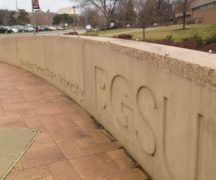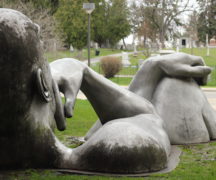By DAVID DUPONT
BG Independent News
Learning how to manage money and learning the value of sharing that wealth with others go helping hand in helping hand.
For the past 15 years, Auburn University’s Women’s Philanthropy Board has entwined those lessons in programs geared toward elementary school students through adults.
Bringing those values together is essential, said Sidney James Nakhjavan, the executive director for the Cary Center for the Advancement of Philanthropy and Nonprofit Studies at Auburn.
She was the keynote speaker at the Women in Philanthropy Summit Saturday at Bowling Green State University. The summit was convened by the presidents of BGSU, Otterbein University and the University of Findlay.
“When you talk in terms of money management, you talk in terms of one thing,” Nakhjavan told those in attendance. “When you talk in terms of philanthropy and building a legacy, you certainly are talking about one thing. When you blend it then you get this powerful force that really effects change within people. … It becomes this burning passion.”
While teaching money management may seem fairly dispassionate, said Nakhjavan every semester she gets “criers.”
One male student became apoplectic in a session talking about money management. He was angry because he didn’t realize how much debt he was taking on. He didn’t know what an IRA or a 401K was.
He’s not alone. One young woman told Nakhjavan that when she saw 401K on the syllabus, she thought she was going to have to run a race. Another thought United Way was an airline.
“They end up being grateful to learn this stuff and empowered to build their legacy,” the speaker said.
Since 2001, the efforts, started as Women’s Board for Philanthropy, have been working to increase that learning curve.
Seminars for women, started with 100 attendees, have grown to attract 1,000 attendees.
The formation of the board was prescient. In 2001 Dean June Henton, of the College of Human Sciences, with colleagues and a donor, attended a conference with the intention of finding how to cultivate a culture of philanthropy among women on the Auburn campus.
“What prompted that,” Nakhjavan said, “was the then emerging societal trend that women would be the predominant wealth holders in this country, and therefore the world. With that power of the purse, women would have more influence.”
This came to pass in 2010, she said. “The face of philanthropy has changed.”
Nakhjavan was hired in 2004. The board, which is housed in the College of Human Sciences, has created a course, which led to the creation of two more courses. Those became the core of a minor in philanthropy. The board created a summer camp for elementary school children, Camp iCare, and one of teenagers, Real Cents Real Change.
The center, which promotes the value of philanthropy, also lives by it. It has no university budget. Rather it has survived through donations. “Without philanthropic support our work is not possible,” she said.
Nakhjavan said that Mary Ellen Mazey, now BGSU president, has her “fingerprints all over” these efforts from her time as Auburn provost from 2009 to 2011.
In closing the summit, Mazey expressed interest in creating a philanthropy minor at BGSU. The minor, which is open to all students, would be akin to the entrepreneurship minor.
In her speech, Nakhjavan said there were four key components to establishing and maintaining the program.
“Without these our work would have fizzled out,” she said.
First are the philanthropists. Whether foundations, corporations or individuals from age 13 to 90, they share “the common goal to educate, empower and enable people to reach their full potential.”
Second is administrative support and university commitment. Henton has “steadfastly advocated for our work,” Nakhjavan said.
The third key component is students. “Students are our oxygen.”
Fourth is dedicated staff. The center has seasoned professionals who have been at their jobs for a while, “so our work has not lost momentum.”
The keynote capped a morning-long slate of panels and discussions.
During a luncheon panel, Katherine Kreuchauf, president of the Findlay-Hancock County Community Foundation, reflected on the shift in generational attitudes. Baby Boomers, she said, want more control over how their gifts will be used.
Her agency, she said, was created thanks to large unrestricted gifts. Now she has to strike a balance between donors’ desire to control how their legacies will be spent and the need for such unfettered funds.
Because women on average outlive men, more and more of those decisions are made by women.
Kreuchauf said that 70 percent of the time when a husband dies, the widow will get a new attorney and a new financial advisor. They want professionals “they are more comfortable with.”
Linda Forte, a senior vice president for Business Affairs for Comerica Incorporated, said while men tend to delve into the technical aspects of investments, “women like a relationship that’s a little bit warmer.”
She added: “Women’s input is being weighed more heavily than ever.”
The luncheon panel members were also asked how they made decisions on where to donate their money.
Deb Ernsthausen, a vice president in the Toledo market for PNC Bank, said it was driven by personal experience. A relative, for example, who has received hospice treatment would lead to support for hospice.
Forte said she and her husband have focused much of their giving on promoting the study of African-American history, particularly with support for the Charles H. Wright Museum in Detroit.
Kreuchauf said the arts have been a prime interest for her. “Arts organizations tend to be the orphans” in philanthropy, she said. They are the first to lose support in an economic downturn and the last to regain it when the economy improves.





